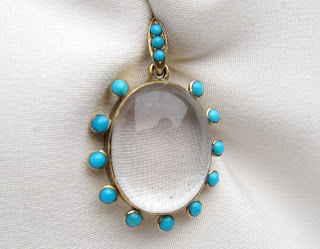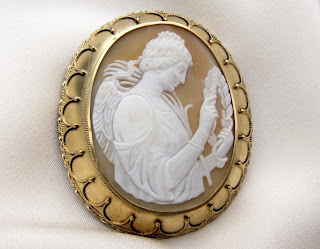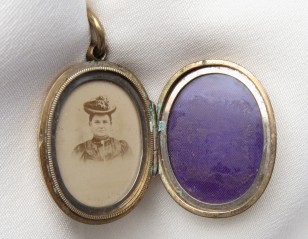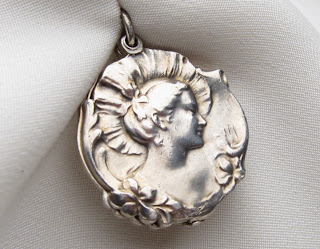I like “Mother’s Day”. There is something beautiful about a holiday centered on thanking someone for all the wonderful things they do and for essentially giving one the gift of life. And because mother’s day puts me in a sentimental mood today I am going to write about a sentimental style of jewelry – the locket.
When I think of lockets I always think of my great grandmother. I never saw her without one of two lockets around her neck. When I was born she wore a clear locket with a photograph of me in it. Three years later when my brother was born she alternated a locket with my photograph and a locket with my brother’s photograph, which I can tell you was a bone of contention for quite some time. Now at the mature age of thirty I wonder if at some point there was a third locket of my father that we ousted upon our births.
But what I do know is, I walked proud when my great grandmother had my photo strung round her neck so everyone could see. And when I was little I thought everyone wore clear lockets so people could see the photograph within. But as with everything we learn more as we age and a magical vista of beautiful and different lockets was introduced to me.
So today I decided to learn a little more about lockets.
According to my research the first locket can be traced back to William the Conqueror and 1050BC. At that point in history a locket housed not a picture but poison, powder or snuff and was at that time called a “Loquat” (Old English for small latch or lock).
It was in 1679 that the locket became popular as a device to hold a memento, often a lock of a loved ones hair. (It is even said the term “Lock of Hair” comes from the Victorian tradition of snipping a curl of hair from a loved one and placing it in a locket).
It was not until the 17th Century that the locket began to hold a picture like it most frequently does today. At that era in pre-photographic historic time it would have been a small painted portrait often given to a loved one as a memento on the commencement of a journey or a place for a woman to keep an image of her children.
And then in 1860 we get closer to modern tradition with the advent of the miniature photograph.
Jewelry is a very personal thing. We wear it close to us and while our jeans and sweater might change with the shifting season and even faster shifting styles, our jewelry, the pieces we love we wear for a lifetime and the stuff we really love is worn for generations.
I am lucky I come from a family that loves jewelry and values passing it down from generation to generation, finding a connection between mother, daughter, grandmother and great grandmother. I have four generations of women’s jewelry in my jewelry box and often on my person. I have my great grandmother’s Victorian brooch given to her in Montana by my great grandfather. I never met my great grandmother Aya but I have a connection in that piece of jewelry that she passed down to my grandmother and she in turn passed down to me. I have my great grandmother Lucille’s opal ring because we were both October Birthdays and she felt it was important that that piece be passed down to someone with a like Birthday. I have my grandmother’s engagement ring from her second marriage and I have my mother’s favorite earrings from her college years, a pair of hoops bought on a memory filled trip to Morocco. I do not wear these pieces every day but every time I put them on I think about that mother.
And lockets, to my mind, seem one of the most personal pieces of jewelry of all. In my readings I read that the heart locket came into popularity during the Victorian era because is represented another’s heart resting on one’s own and that it held a woman’s feelings for the man, woman or child pictured within.
Heirloom jewelry is such a beautiful, tangible thing, connecting one to those one loves, not only for one generation but also for many. Jewelry like family can be multi-generational, a sentimental love story between grandmother, mother and child.








1 comment:
Most families have them in that unique piece of jewelry. The one that everyone desires to some degree. These jewels probably not begin as an heirloom potential. But like a coin, or see what was popular at a time or a lot, overtime has become rare. Some unique to the point of becoming.
Loose Diamonds
Post a Comment